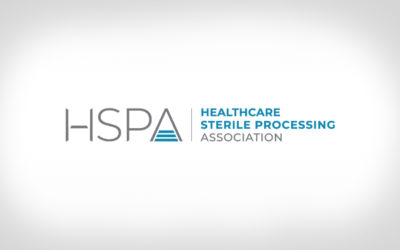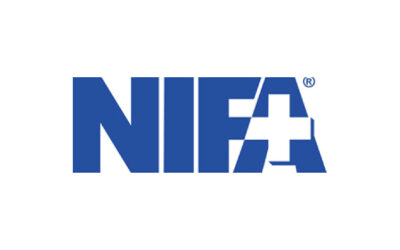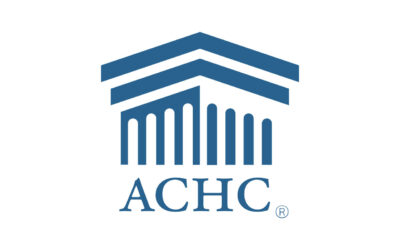Recommendations Included for Sterile Processing Professionals
By Susan Klacik, ACE, CIS, CRCST, FCS
 On July 1, 2019, the Association of periOperative Registered Nurses (AORN) released its updated Guideline for Surgical Attire. AORN updated the guideline after several new published studies were released regarding attire that were significant enough to consider practice changes, according to Lisa Spruce, DNP, RN, CNS-CP, CNOR, ACNS, ACNP, FAAN, AORN director of evidence-based practice and lead author of the update.[1]
On July 1, 2019, the Association of periOperative Registered Nurses (AORN) released its updated Guideline for Surgical Attire. AORN updated the guideline after several new published studies were released regarding attire that were significant enough to consider practice changes, according to Lisa Spruce, DNP, RN, CNS-CP, CNOR, ACNS, ACNP, FAAN, AORN director of evidence-based practice and lead author of the update.[1]
The evidence-based guideline provides recommendations for Central Service/Sterile Processing (CS/SP) staff because the preparation and packaging, sterilization and sterile storage areas are classified as semi-restricted. In addition, CS/SP staff may enter the surgical department and must comply with these recommendations. This article highlights some of the main areas of focus in AORN’s 2019 Guideline for Surgical Attire.
Many of the basic requirements for attire have not changed. Clean surgical attire laundered by a health care-accredited laundry facility or at the health care organization – in accordance with state regulatory requirements – and donned at the facility protects patients from exposure to microorganisms that could contribute to surgical site infections (SSIs). Scrub attire should be removed before leaving the facility. Surgical attire should not be laundered at home since it is not monitored for quality, consistency or safety. Home laundering also does not provide for the necessary parameters to reduce the microbial levels in soiled scrub attire.
There is not a recommendation for wearing long sleeves while preparing instrumentation (wearing personal attire under scrub attire was reviewed, with no recommendation being made). The AORN guideline recommends establishing and implementing a process for managing personal clothing that may be worn under scrub attire. Some of the features to consider include: the type of fabric, the amount of fabric that can be seen outside of the scrub attire, and type of laundering and frequency.
For head attire, it is recommended that the scalp and hair be covered. Head attire must be removed at the end of the shift or when contaminated. When working in the preparing and packaging area, beards must be covered.
There are also recommendations for employee identification badges because it is possible that badges can become contaminated with pathogens. If employee identification badges become contaminated with blood, body fluids or other potentially infectious materials they should be cleaned with a low-level disinfectant.
Bringing items from outside of the health care facility into the CS/SP preparation and packaging area is a concern because they may be difficult to clean and may harbor pathogens, dust and bacteria, which can contaminate the area. Some of the personal items of concern include briefcases or backpacks brought in by vendors for demonstration, or by repair personnel. It is recommended that a process be established to prevent contamination of the CS/SP areas by designating a location to place such items or establishing a process to clean and contain them.
Hand-held electronic devices such as cellphones and tablets are a new area of concern. Research has shown that these items can also be highly contaminated with microorganisms, including some that are potentially pathogenic. Before entering the surgical suite, it is recommended that these devices be cleaned according to their manufacturers’ instructions for use; proper hand hygiene must also be performed.
Note: The full Guideline for Surgical Attire is available at www.aorn.org. AORN is also offering the “Guideline Update: Surgical Attire Webinar Replay” (free for AORN members and $11 no non-members) at shop.aorn.org/guideline-update-surgical-attire-replay/. Additionally, AORN published the May 22, 2019, article “3 Tough Attire Challenges Solved,” which includes three common surgical attire-related questions and evidence-based answers to help health care professionals adapt to the new practices.
Reference
[1] Association of periOperative Registered Nurses. 3 Tough Attire Challenges Solved. May 22, 2019.
Susan Klacik, ACE, CIS, CRCST, FCS, is an IAHCSMM Clinical Educator.











Lead aprons & kilts/vests – we just started having our leads professionally serviced and cleaned not too long ago. The difference has been shocking to see. To the point that most of us have been embarrassed to admit the condition that our leads used to be when we worked in them everyday. The light bulb just went off for our facility on this topic after the first time our garments were returned from being professionally cleaned and x-rayed. (Some company in IN I think?) The 2019 update was informative, but it feels like if AoRN is looking at infection concerns on employee ID badges in surgery, then lead PPE should be considered as well…they get nasty.
Glad to see the concern raised about contaminated ID badges. Would like to see AORN speak to the need to appropriate clean the x-ray garments we wear intraoperatively. We have a cleaning service at my facility (RCS), but prior to that, they were so gross, and I could get next to zero information or help from the lead vendors.